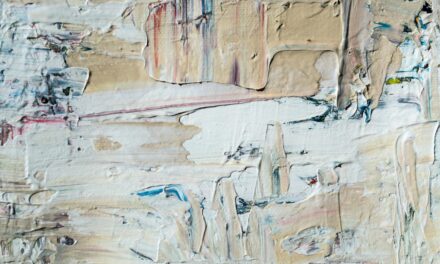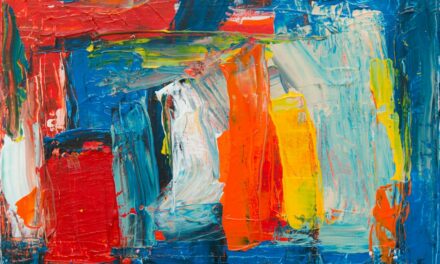Line weight, a fundamental aspect of drawing, refers to the thickness or thinness of a line. In pencil sketches, it plays a crucial role in conveying form, depth, and emotion. Artists often manipulate line weight to create visual interest and guide the viewer’s eye through their work.
While it may seem like a simple concept, the effective use of line weight can elevate a sketch from a mere representation to a compelling piece of art.
In the realm of pencil drawing, line weight is not merely a technical consideration; it is an expressive tool that can communicate a range of feelings and atmospheres.
A delicate, fine line might evoke fragility or gentleness, while a bold, heavy line can suggest strength and solidity. By varying line weight, artists can imbue their sketches with character and dynamism, making them more engaging and lifelike. This article will delve into the significance of line weight in pencil sketches, exploring its impact on depth, contrast, perspective, and style.
Summary
- Line weight is a crucial element in pencil sketches, as it can add depth and dimension to the artwork.
- Varying line weight in pencil sketches can create the illusion of depth and distance, making the artwork more visually engaging.
- Techniques such as hatching, cross-hatching, and stippling can be used to vary line weight in pencil sketches, adding texture and depth to the artwork.
- Line weight can be used to create contrast and emphasis in pencil sketches, drawing the viewer’s attention to specific areas of the artwork.
- Understanding the role of line weight in perspective is essential for creating realistic and dynamic pencil sketches.
The Importance of Line Weight in Creating Depth
One of the most significant functions of line weight is its ability to create depth within a drawing. By varying the thickness of lines, artists can suggest which elements are closer to the viewer and which are receding into the background. Thicker lines often denote foreground objects, while thinner lines can represent those further away.
This technique mimics the way our eyes perceive the world, where objects closer to us appear more defined and detailed than those in the distance. Moreover, line weight can also be used to indicate light and shadow. In a well-executed pencil sketch, heavier lines may outline areas that are in shadow or receive less light, while lighter lines can define illuminated surfaces.
This interplay between light and dark not only enhances the three-dimensionality of the subject but also adds an emotional layer to the artwork. The careful manipulation of line weight allows artists to guide the viewer’s perception of space and form, creating a more immersive experience.
Techniques for Varying Line Weight in Pencil Sketches
To effectively vary line weight in pencil sketches, artists can employ several techniques that enhance their control over the medium. One common method is to adjust the pressure applied to the pencil while drawing. By pressing harder on the pencil, artists can produce thicker lines, while a lighter touch results in finer lines.
This technique requires practice to master, as it demands a delicate balance between pressure and control. Another effective approach is to utilise different pencil grades. Softer pencils (such as 2B or 4B) yield darker and thicker lines, while harder pencils (like H or 2H) create lighter and thinner marks.
By incorporating a range of pencil grades into their sketches, artists can achieve a more nuanced variation in line weight. Additionally, using techniques such as cross-hatching or stippling can further enhance the depth and texture of a drawing, allowing for even greater manipulation of line weight.
Using Line Weight to Create Contrast and Emphasis
Line weight is also instrumental in establishing contrast and emphasis within a pencil sketch. By strategically varying line thickness, artists can draw attention to specific areas of their work, guiding the viewer’s focus where it is most needed. For instance, an artist might use bold lines to highlight a central figure or important detail while employing lighter lines for background elements that should recede into obscurity.
This technique not only enhances visual hierarchy but also adds drama and tension to a composition. The juxtaposition of thick and thin lines can create a sense of movement or rhythm within the artwork, making it more dynamic and engaging. Furthermore, by emphasising certain elements through line weight, artists can convey narrative significance or emotional resonance, enriching the viewer’s experience and interpretation of the piece.
Understanding the Role of Line Weight in Perspective
Perspective is another area where line weight plays a pivotal role in pencil sketches. When depicting three-dimensional space on a two-dimensional surface, artists must consider how line weight can influence the perception of depth and distance. In linear perspective, objects that are further away tend to be represented with lighter and thinner lines, while those that are closer are outlined with heavier strokes.
This technique helps to create an illusion of depth that draws the viewer into the scene. Moreover, line weight can also be used to indicate atmospheric perspective, where distant objects appear lighter and less defined due to the effects of air and light scattering. By employing softer lines for background elements and bolder strokes for foreground subjects, artists can effectively simulate this natural phenomenon.
Understanding how to manipulate line weight in relation to perspective not only enhances the realism of a sketch but also allows for greater artistic expression.
Tips for Practicing and Mastering Line Weight in Pencil Sketches
To master the art of varying line weight in pencil sketches, artists should engage in regular practice focused specifically on this aspect of drawing. One effective exercise is to create a series of lines with different weights using various pressures on the pencil. This simple practice helps develop muscle memory and control over line thickness.
Artists can also experiment with different pencil grades to see how they affect line weight and overall sketch quality. Another valuable tip is to study the work of other artists who excel in their use of line weight. By analysing how they employ thick and thin lines within their compositions, aspiring artists can gain insights into effective techniques and approaches.
Additionally, copying masterworks can be an excellent way to internalise these concepts while developing one’s own style. Over time, consistent practice and observation will lead to greater confidence and skill in manipulating line weight.
Exploring Different Styles and Approaches to Line Weight in Pencil Sketches
Line weight is not only a technical consideration but also an integral part of an artist’s unique style. Different artistic movements have approached line weight in varied ways, each contributing to distinct visual languages. For instance, the delicate lines found in traditional Japanese ink drawings contrast sharply with the bold strokes characteristic of expressionist works.
Exploring these diverse styles can inspire artists to experiment with their own use of line weight. Furthermore, contemporary artists often blend various techniques and styles to create innovative approaches to line weight in their sketches. Some may favour a minimalist aesthetic with sparse yet impactful lines, while others might embrace intricate patterns that play with thickness and texture.
Harnessing the Power of Line Weight to Enhance Pencil Sketches
In conclusion, line weight is an essential element that significantly impacts the effectiveness of pencil sketches. Its ability to create depth, contrast, emphasis, and perspective makes it a powerful tool for artists seeking to enhance their work. By mastering techniques for varying line weight and exploring different styles, artists can unlock new dimensions in their sketches that resonate with viewers on multiple levels.
As artists continue to develop their skills and understanding of line weight, they will find that this seemingly simple concept holds immense potential for creative expression. Whether through delicate nuances or bold statements, harnessing the power of line weight can transform ordinary sketches into extraordinary works of art that captivate and inspire.
If you are interested in exploring the intersection of art and spirituality, you may enjoy reading the article “Art and Soul” on thinkofart.com. This article delves into how artists use their work as a means of expressing their innermost thoughts and emotions, providing a deeper understanding of the creative process. Understanding Line Weight: Adding Depth to Pencil Sketches can be enhanced by considering the spiritual and emotional aspects of art, as discussed in this thought-provoking piece.


